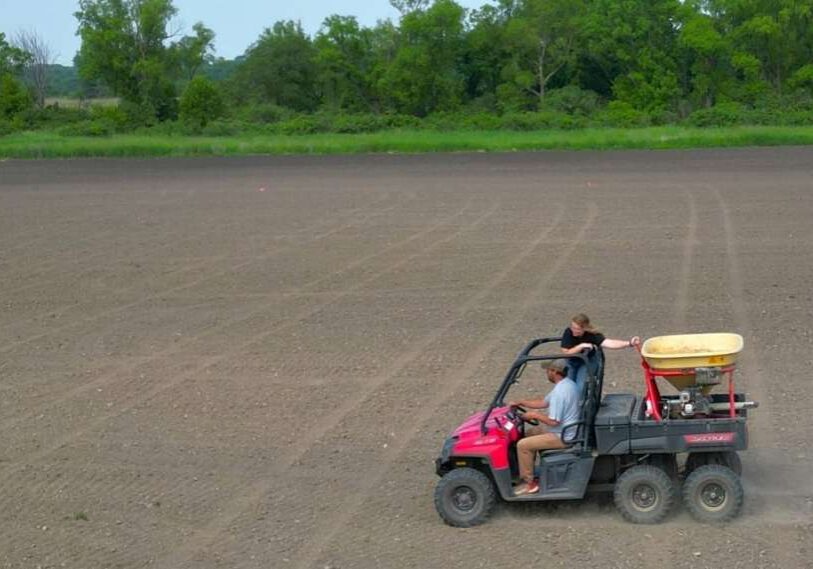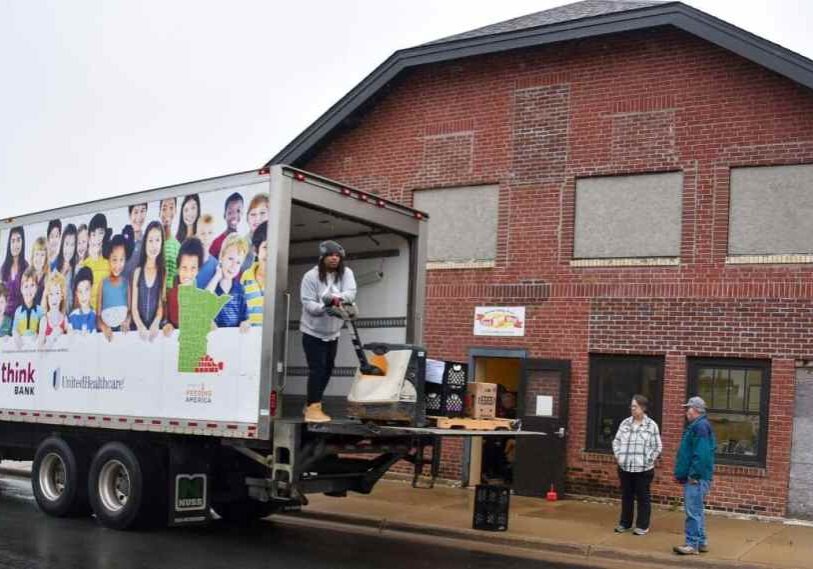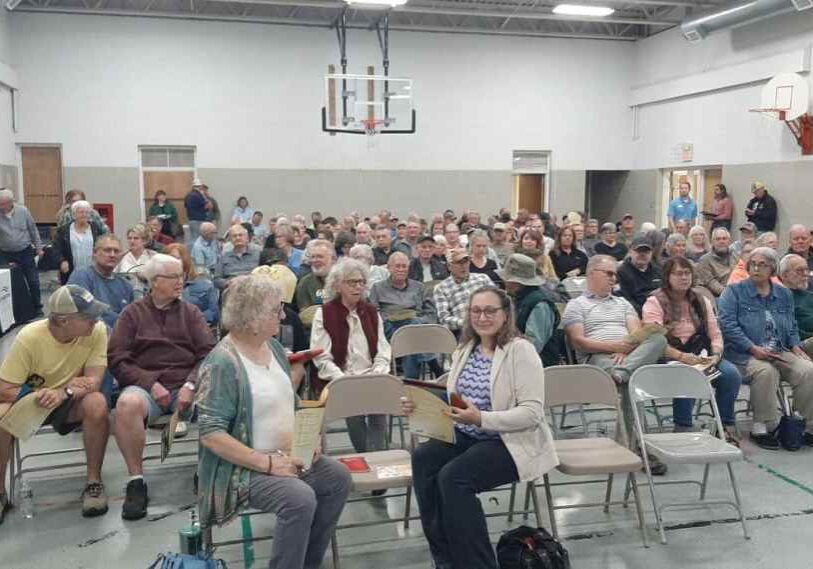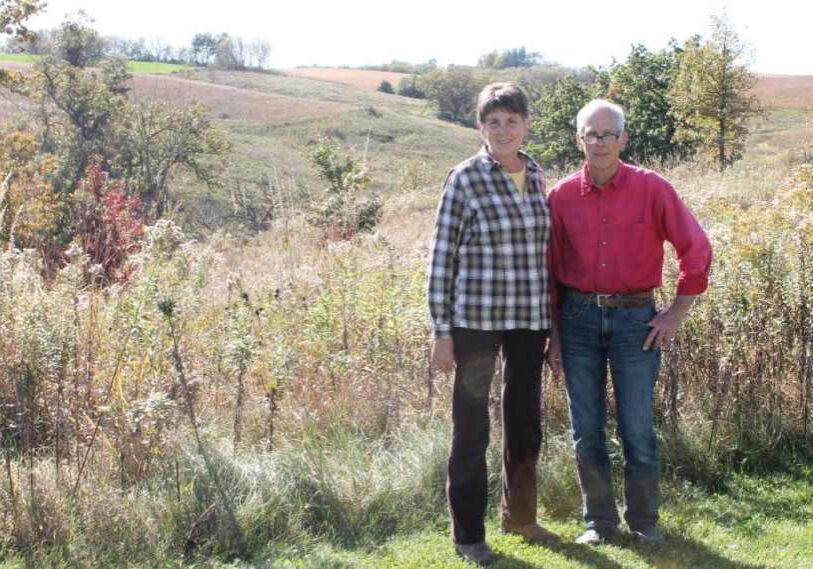Wilderness-Style Minnesota Driftless Hiking Trail Making Progress
Organizers continue their work with public and private landowners to develop the 100-plus mile trail

SOUTHEAST MINNESOTA—Since first introducing the idea of a wilderness-style hiking trail through much of the Root River Valley in 2018, organizers have been quietly – but persistently – moving their idea forward, though one could argue that getting the attention and support of the Minnesota Legislature to award a significant grant to the project took more than quiet persistence.

Minnesota Driftless Hiking Trail enthusiasts, and MDHT board members, Marty Walsh and Andy Petzold, look forward to segments of the trail gradually opening over the next few years. (Photo courtesy of MDHT)
Indeed, the Minnesota Driftless Hiking Trail (MDHT) has required careful planning, a well-articulated vision, and a fair amount of intentional rallying among state and local leaders to get both the funding and community support necessary to make a 100-plus mile trail through the region a possibility. And there’s more to do.
This year, according to Trail Director Alexa Shapiro, she and the MDHT board have focused on building landowner partnerships and working with local communities to establish access agreements. There’s a lot to the process, they point out. “This project has so many layers.”
As 2025 winds up, the MDHT organizers are moving forward armed with what they learned during a series of community forums over the past year.
Among the things on their agenda this fall is officially designating the first couple of legs of the trail, and making preparations for a series of virtual meetings in 2026 for folks to connect with the team and provide additional feedback and ideas. While the series will be open to the general public, Shapiro says, it will have a specific focus on landowners in Houston and Fillmore counties.
Conversations shape the trail ahead
“In the early months of 2025, our focus was on outreach, education, and engagement throughout the trail corridor,” Shapiro wrote in a recent newsletter. “As someone still relatively new to the project, having been hired last fall, it’s been a meaningful opportunity to connect with people across the region and hear directly from residents about their hopes and concerns for the trail.”

Given the Minnesota Driftless Hiking Trail’s proposed corridor (above), organizers in 2025 have been focused on potential trail segments near Caledonia in eastern Houston County, from Beaver Creek Valley State Park to the Mississippi River, and in central Fillmore County, from Eagle Bluff Environmental Learning Center to the Big Woods/Newburg area. (MDHT graphic)
In May, MDHT concluded a series of community forums in Chatfield, Caledonia and Whalan. The forums offered MDHT an opportunity to hear structured feedback from the communities this trail will impact most.
Over 60 community members participated in the gatherings where they discussed hopes and concerns, opportunities for youth and families to access southeastern Minnesota’s unique habitat, landscape and culture, the potential for increased tourism and support for local business.
According to MDHT planners, it was clear that people want to fully understand what the trail could mean for their communities and their land – and how their concerns might be addressed, ranging from the use of eminent domain to the potential impacts of increased foot traffic and future trails.

Volunteers have been helping scout out and survey what will eventually be the 100-plus mile Minnesota Driftless Hiking Trail through Southeast Minnesota providing hikers and backpackers a wilderness-style trek through the Drifless Area’s unique landscapes. (Photo courtesy of MDHT)
There was discussion about litter, trailhead use and how this project will respect the landowners who view their properties as places of refuge.
Also addressed was how the trail might affect local hunters, and MDHT’s ideas of how to build this project in a way that strengthens, rather than disrupts, existing recreational use.
The forums underscored the need for clear communication moving forward, including an FAQ document that provides more transparency and clarity about some of the key topics discussed at the forums regarding landowner partnerships and how hunting will be factored into planning.
In the end, the MDHT feels the forums ended on an incredibly hopeful note.
In each community, there was a spark of excitement, according to the MDHT’s report—an eagerness to start thinking about what comes next. From new ideas about how to welcome hikers with campgrounds, showers and supplies, to conversations about funding opportunities and community partnerships, the energy was contagious.
One question at the Whalan forum seems to have captured the tone perfectly: “What can we start doing now to prepare to welcome hikers?” Responses that followed reflected a genuine sense of local pride and future-minded optimism.
Shapiro and the MDHT board feel more committed than ever to building this trail with communities, not just through them. “We’re deeply grateful to everyone who joined us to share ideas, voice concerns, and offer support. We’re looking forward to offering more opportunities to ask questions, provide feedback, and shape this trail together.
“The path forward is clearer—and more inspiring—thanks to you.”
(Photo courtesy of MDHT) Alexa Shapiro joined the MDHT project as its director in 2024, supported by a grant from Minnesota’s Environment and Natural Resource Trust Fund and the Legislative Citizen Committee on Minnesota Resources (LCCMR). Alexa has a history that makes her a good leader for the Minnesota Driftless Hiking Trail (MDHT). She was the founder and long-time director of the Winona Outdoor Collaborative which worked to strengthen and broaden the outdoor community in Winona, Minn. She has also worked in the municipal parks and trails industry and a non-profit working to bring conversations to communities around Minnesota. With Alexa at the helm, the MDHT is moving forward with a number of initiatives to bring this trail to life. These include more community and landowner conversations across Fillmore and Houston Counties, increased DNR partnerships, and a number of speaking engagements – much of which is made by possible by the LCCMR’s $426,000 grant. You can contact her here.
Guiding the Minnesota Driftless Hiking Trail Development
This PDF version of MDHT’s Trail Town Report summarizes the 2024-25 community forums.
Read more about the MDHT project’s founding and initial planning in The Minnesota Driftless Hiking Trail (MDHT) Gets Two Steps Closer to Reality, published by Root River Current in May 2024.
For recent developments, additional history and project leadership information, visit the Minnesota Driftless Hiking Trail’s website. To get involved, check out MDHT’s Take Action page. Answers to specific questions related to the trail can be found on the MDHT FAQ page.
Updates are also available on the MDHT Facebook page.
Information for this article was compiled from MDHT newsletters, emails and website.





